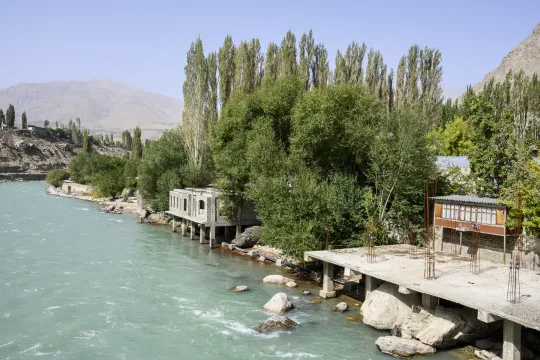
At Our City Plans, we recognize the critical need to integrate climate change considerations into urban planning to build resilient and sustainable cities. Our framework, guided by UN-Habitat’s Environmental and Social Safeguard System (ESSS), provides cities with comprehensive tools to address climate risks and implement effective climate action strategies. Within our toolbox, we have a "Climate Action" theme that allows users to filter components specifically related to climate action by simply checking the box. Here’s how cities can leverage Our City Plans to incorporate climate change into urban planning processes:
1. Utilizing the Environmental and Social Safeguard System (ESSS)
Our City Plans incorporates the ESSS in its methodology to assess the risks and impacts both of the urban planning process (development of the plan) and the Plan itself (strategies, actions, and projects included proposed in the Plan). The T10 Environmental and Social Screening Report helps identify the risk level, and further templates included in Activity 6 Environmental and Social Development Impact Plan for the Planning Process, Activity 24 Environmental and Social Impact Strategy for the City and Activity 35 Environmental and Social Impact Strategy for the Neighbourhood guides the different documents that need to be developed to mitigate the risks and impacts.
2. Disaster Risk Reduction and Climate Action:
Cities can develop a disaster risk reduction and climate action plan using Our City Plans Toolbox. Starting with Block D — Analysis & Diagnostic, a vulnerability analysis can be developed through a participatory and technical approach, using tools such as the T17 Impact Chain Diagram and T20 Vulnerability Assessment. These inputs are incorporated to the Diagnostic to inform the strategic component of the Plan, with tools such as T61 Risk Response Options and T62 Resilience Initiatives.
3. Urban Land Policies and Spatial Planning for Climate Action:
Phase 2 Planning includes different types and scales of plans that can be developed using the Toolbox, incorporating guidelines to minimize enivironmental degradation, promote the conservation of natural areas, and of blue and green infrastructure, and promote resilience, through land management regulations and spatial strategies such as zoning.
4. Creating Green Spaces and Enhancing Biodiversity
Green spaces are crucial for climate adaptation and mitigation. Our City Plans offers frameworks and best practices for creating and maintaining open public spaces, urban forests, and green corridors. These green spaces sequester carbon, reduce urban heat islands, manage stormwater, and support biodiversity. By following our guidelines, cities can enhance their resilience and provide numerous benefits to their residents.
5. Promoting Energy Efficiency and Renewable Energy
Our City Plans promotes the incorporation of energy efficiency measures and renewable energy sources into urban planning, including an integrated approach to climate mitigation and adaptation. Cities can implement strategies for solar panels, wind turbines, and energy-efficient building designs, reducing their carbon footprint and enhancing energy security. These initiatives reflect our unwavering dedication to pioneering urban landscapes that thrive sustainably and resiliently amidst climate challenges. Specific sectoral plans such as energy efficiency can be developed using the Toolbox.
6. Developing Sustainable Transportation Solutions
Transportation is a significant source of urban emissions. Our City Plans supports cities in developing comprehensive transportation networks that prioritize sustainable options such as public transit, cycling, and walking. These efforts reduce reliance on private vehicles, lower greenhouse gas emissions, and promote connectivity and accessibility within urban areas.
7. Engaging Communities and Educating Residents
Community engagement is crucial for successful climate adaptation. Our City Plans includes vigorous strategies for public consultations, workshops, and participatory planning sessions. Educating residents about climate risks and involving them in decision-making processes ensures that solutions are locally relevant and supported. This approach builds capacity and knowledge among local stakeholders and city officials.
8. Integrating Policy and Collaboration
Climate change requires integrated policy approaches. Our City Plans encourages collaboration between urban planners and various sectors, such as health, transportation, and environmental management. We provide templates and examples of cohesive and comprehensive strategies that support climate-resilient urban development, ensuring that policies align at local, regional, and national levels.
9. Leveraging Data and Technology
Data and technology are crucial for effective urban planning. Our City Plans offers resources for using Geographic Information Systems (GIS), climate modeling, and big data analytics. These tools help cities develop evidence-based strategies, monitor progress, and make informed decisions. High-resolution satellite imagery and drone technology can also enhance the level of detail and accuracy in data collection.
Incorporating climate change into urban planning processes is essential for building eco-friendly and adaptive cities. Our City Plans provides the tools, resources, and strategies needed to integrate climate resilience into every aspect of urban planning and development. By leveraging Our City Plans, cities can better prepare for the challenges of climate change and ensure a safer, more prosperous future for all urban inhabitants.
